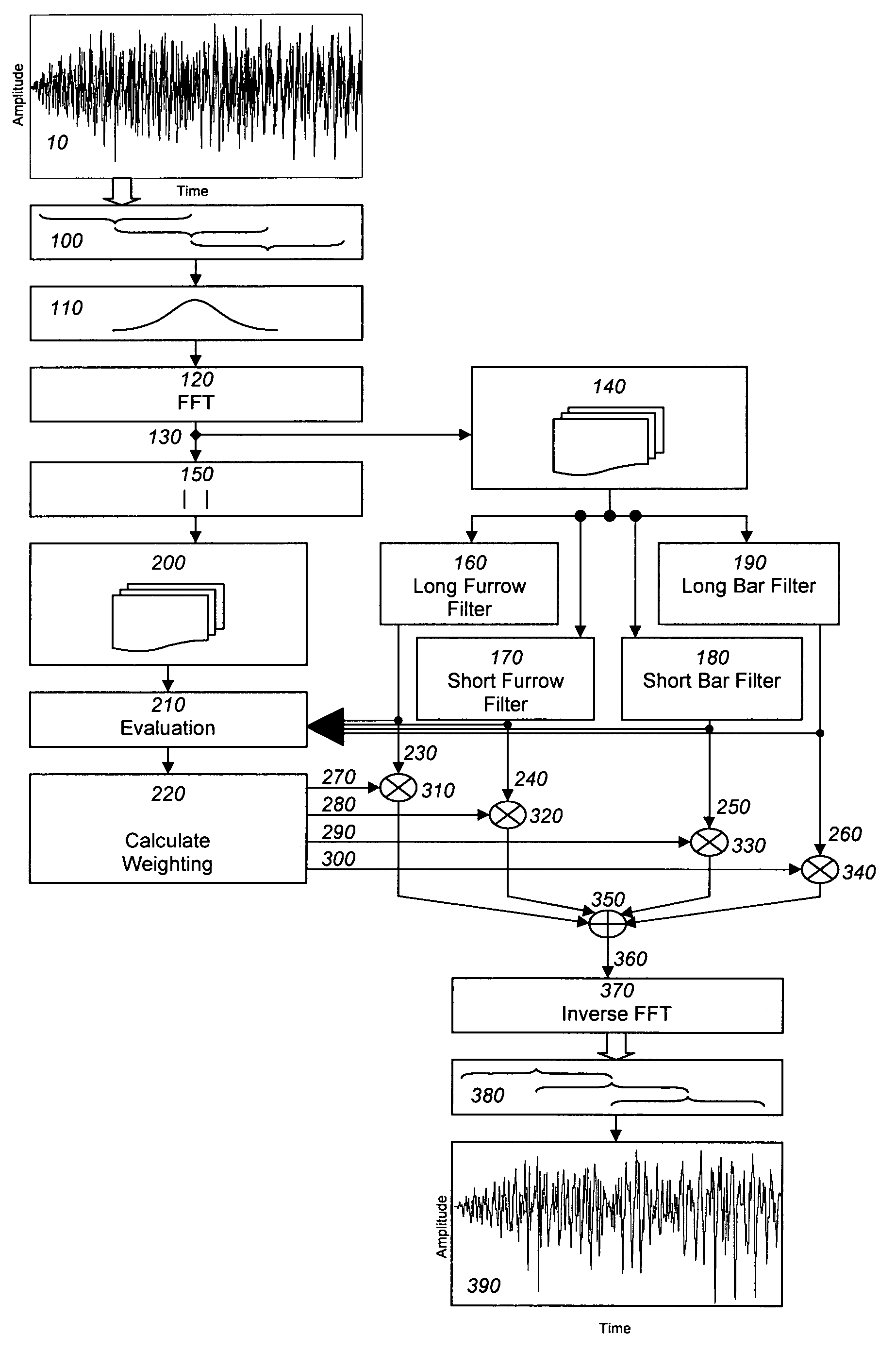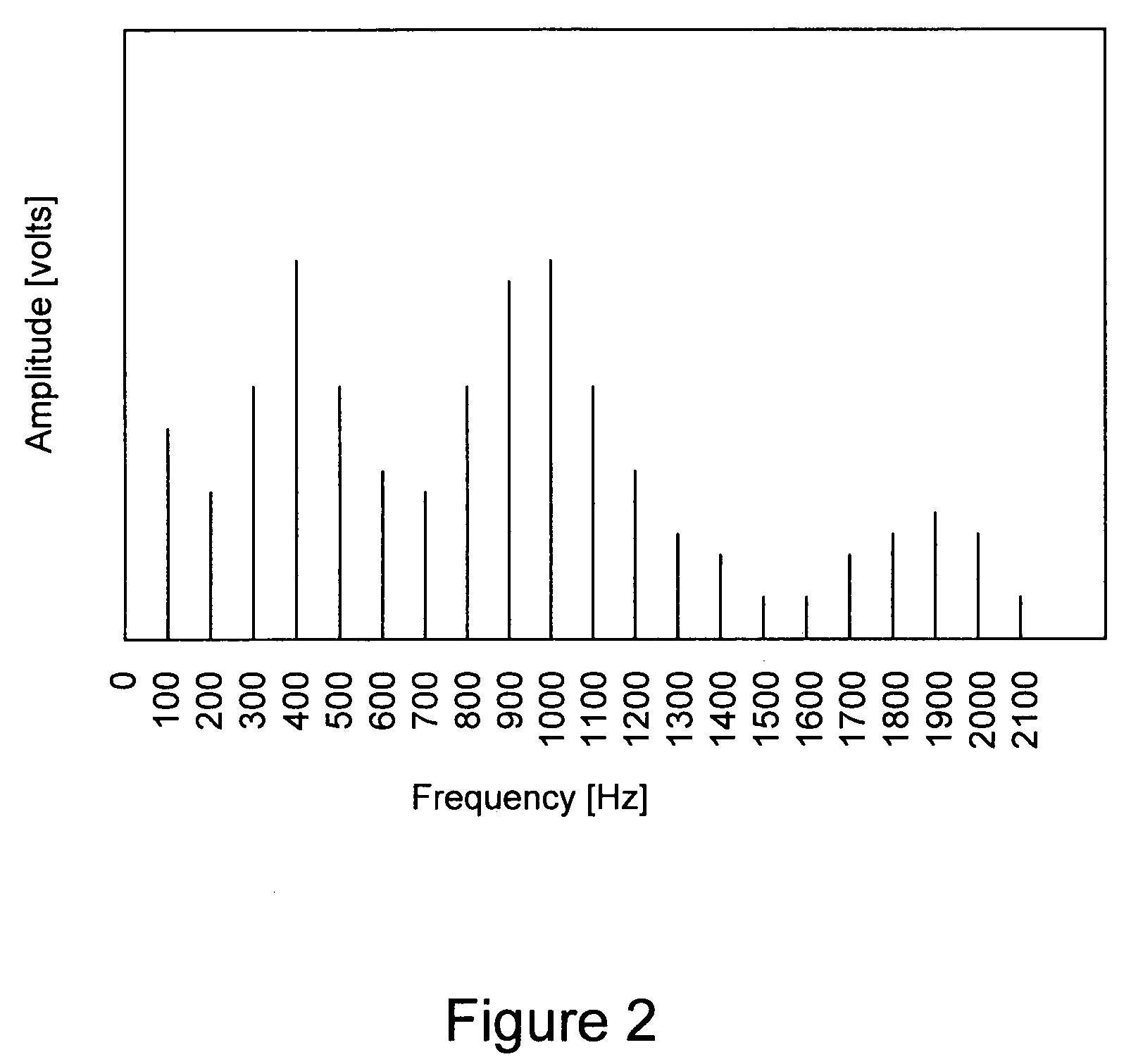Audio spectral noise reduction method and apparatus
a spectral noise reduction and audio technology, applied in the field of digital signal processing, can solve the problems of ineffectiveness, relatively inaudible reception signal, and inability to achieve the effect of enhancing the voiced features of speech segments and improving the intelligibility of output signals
- Summary
- Abstract
- Description
- Claims
- Application Information
AI Technical Summary
Benefits of technology
Problems solved by technology
Method used
Image
Examples
Embodiment Construction
[0095]The current state of the art with respect to noise reduction in analog signals involves the combination of the basic features of the noise gate concept with the frequency-dependent filtering of the spectral subtraction concept. Even this method, however, does not provide a reliable means to retain the desired signal components while suppressing the undesired noise. The key factor that has been missing from prior techniques is a means to distinguish between the coherent behavior of the desired signal components and the incoherent behavior of the additive noise. The present invention involves performing a time-variant spectral analysis of the incoming noisy signal, identifying features that behave consistently over a short-time window, and attenuating or removing features that exhibit random or inconsistent fluctuations.
[0096]The method employed in the present invention includes a data-adaptive, multi-dimensional (frequency, amplitude and time) filter structure that works to enh...
PUM
 Login to View More
Login to View More Abstract
Description
Claims
Application Information
 Login to View More
Login to View More - R&D
- Intellectual Property
- Life Sciences
- Materials
- Tech Scout
- Unparalleled Data Quality
- Higher Quality Content
- 60% Fewer Hallucinations
Browse by: Latest US Patents, China's latest patents, Technical Efficacy Thesaurus, Application Domain, Technology Topic, Popular Technical Reports.
© 2025 PatSnap. All rights reserved.Legal|Privacy policy|Modern Slavery Act Transparency Statement|Sitemap|About US| Contact US: help@patsnap.com



